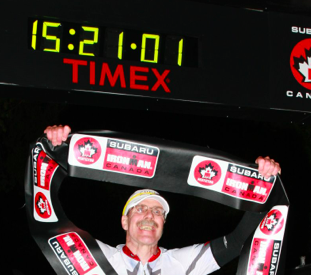Look at me go! Not only the tablet, but Photoshop too! The after.
It maybe isn't noticeable in the small version, but in the big version I see in Lightroom there were several streaks. I'm not sure what they are. I could crop out some of them and make a stronger photo, but one was too close to the blossom, and was the brightest of the bunch. I really liked this shot and didn't want to show it with such an obvious flaw. With the right tools it's easy to fix.
Before this I could count on the thumbs of one hand the number of photos I've altered in Photoshop. It's such an intimidating application, and the trackpad was a difficult tool to work with. It's still intimidating and I don't expect to start using it as the every photo every day photo editing tool. Neither do I expect to be going crazy using it, like adding in a a giant flaming asteroid to create drama.
As a for instance, I tweaked the settings in Lightroom to improve the photo. The original is somewhat darker than what my eyes saw, and the final edit is somewhat brighter. But if you looked at the final edit, and then looked at the actual flower on a late afternoon overcast winter day you'd recognize it as the same scene.
You probably all have an image in your mind of a landscape painter, sitting or standing at their easel, palette in one hand, brush in the other, peering out at the scene and dabbing at the canvas. Some do that, of course, but what they're really doing is painting a scene that is in their mind. Having a painter express their artistic vision by adding or subtracting or altering elements of the 'real' scene is a well established and respected tradition.
These traditions are not quite so firm in photography, and especially not digital photography. Cameras, for better or worse, capture everything. Power lines, stuff intruding on your composition, funny colours or textures, artistic streaks of light, blurs, you name it. Some of those things should be dealt with while taking the photo, and some can be dealt with in editing. It's always fun to give a group of photographers some booze over a discussion of what should be done at the scene, and how much editing is the right amount.
Which is something I've thought about in terms of my own work. How much editing to do? How far to push the settings? Most people think of a photograph as an accurate representation of a scene, something taken by a journalist and published in a newspaper or magazine. Except all of those are edited as well, to support the story at hand.
Really, photographs now are digital art. Light captured on an electronic sensor, manipulated in the camera to create a digital file, sometimes sent to other computers where there will be further manipulation, perhaps actual human editing, further manipulation to display it on a device, and then we get into the human sensory apparatus. A colour blind person will see a different image than the one I produced and edited.
I'm thinking of a particular photo of mine, taken of a sunrise landscape on a winter day. Cold and bleak. I really tweaked the colour, pushed them far more than I usually would, past what you'd see even in a spectacular sunrise. I asked a friend what she thought, and she loved it enough to buy a print. It all comes down to the artistic vision of the person doing the camera work and image editing. No two people will produce the same image, even starting with the same raw file.
So going forward you might not see obvious changes in my photos. What I'm going to work for are subtle tweaks like removing small distractions, and finer adjustments to specific areas. I've had a number of comments suggesting how other people would do things, and I love thinking about that. I hope you all follow along, and don't be afraid to comment on what you see.
And yes, I've begun to think about Image of the Year.
Of the Day
Driftwood
And a Macro Monday paperweight. This looks really similar to, and yet is not the same as one previously presented. There's a subtle difference in the texture of the glass.






My friend James said on Facebook "Ansel Adams, mostly working with black and white negatives and prints, was editing his photos as he took them and developed them, even though he had no access to today's fancy software.
ReplyDeleteToday is a particularly nice driftwood."